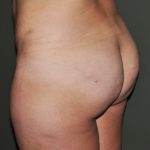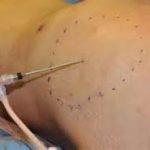Enlargement of the buttocks has been one of the fastest growing procedures in body contouring over the past decade. While implants have been historically used for gluteal augmentation, the injection of fat has now become the most popular method. While fat injections have been used for numerous applications, mainly in the face, its use in the buttocks poses a new variable not seen elsewhere…the need for large volumes. Because of the need for large volume injections in the buttocks, new techniques and methods have evolved.
In the August 2011 issue of Plastic and Reconstructive Surgery journal, a 14 year experience of buttock fat grafting was published. The authors report the evolution of their buttock fat grafting technique over this period of time. The study was divided into three stages according to the infiltrated areas and the evolution of infiltration, stage I was infiltration into the upper gluteal region, stage II was infiltration into the upper and lower gluteal regions, and stage III included stage II location as well as the trochanteric and subgluteal regions. A total of 789 patients were treated over a 14 year period. In stage I, 492 patients received 120cc to 320cc of fat injections. In stage II, 132 patients received 210cc to 460cc of fat injections. In stage III, 165 patients received 220cc to 1,160cc of fat injections.


Buttock enhancement with fat, also known as the Brazilian Butt Lift, will remain a popular procedure even though its volume retention is not always completely predictable. Such variability is tolerated because there is also the body contouring benefits obtained from the liposuction harvest areas. While further refinements in its methods will undoubtably be achieved in the future, fat injection distribution over a broader gluteal area is a foundational technique.
Dr. Barry Eppley
Indianapolis, Indiana



